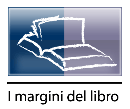 |
17, 2023 | |||
| Abstracts | versione italiana | |
| Saggio |
Nicola Ribatti
Un «groppo di immagini». Codici metaforici e iconografici in Arte del Belli di Carlo Emilio Gadda
The article analyses the metaphorical fields and, in particular, the artistic references in Arte del Belli by Carlo Emilio Gadda. As in Apologia manzoniana, Gadda reads his favorite authors by grasping connections and analogies with visual works. Belli's verses would, for Gadda, have the icastic force of Pinelli or express the same tragic vision as works such as Goya's Caprichos or Los desastres de la guerra; the latter are identified in the article as the source of some passages in Gadda's essay.
versione italiana |
| Saggio |
Muriel Maria Stella Barbero
Il dialogo con i testi letterari nei disegni di Michelangelo: un'analisi tipologica
This essay examines the interplay of word and image on Michelangelo's autograph sheets where sketches and drawings are placed beside literary quotes. Albeit they may appear randomly arranged, in some cases it is possible to recognise or at least assume a mutual thematic relation between these texts and the images they accompany. Literary quotes seem in general to be used by Michelangelo as inspirational sources for his poetry as well as for his art. Their presence on the sheets appear to serve as a way to focus on a particular idea and contemplate it before starting his own creation. Analysing all autographs sheets which include a literary quote, this essay proposes a case study of all occurrences from the entirely fortuitous to the most intentional juxtaposition. This line of inquiry follows and develops further some recent tendencies within the research on Michelangelo's draughtsmanship.
| versione italiana |
| Saggio |
Maria Antonietta Terzoli
Comedia Dante: il titolo del poema e la firma dell'autore nascosti in un verso
Anticipating the complete reading of Purgatorio xxx, this essay reflects on the mention − unique in the Commedia − of the protagonist's (Dante's) name, recognizing in the justification provided by the author also a technical and metatextual reason, which underlines his incredible compositional virtuosity. The author of the essay also identifies in the first words uttered by Beatrice, the young woman who Dante imagines to be at the origin of this work, the encrypted but precise − yet so far unrecognized − mention of the author's signature (first and last name) and the poem's title, the latter being quoted in the exact form used explicitly on two other instances in the Commedia. Title and author's name are recorded in the very verse that follows the declaration of Beatrice's identity, which is itself placed in the mathematical center of the canto.
versione italiana |
